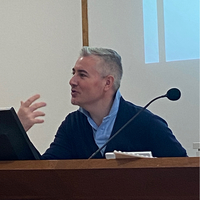PROCEEDINGS OF THE EUROPEAN TRANSPORT CONFERENCE 2007 HELD 17-19 OCTOBER 2007, LEIDEN, THE NETHERLANDS, 2007
ABSTRACT Self-service technologies (SSTs) are increasingly introduced in public transport. A self... more ABSTRACT Self-service technologies (SSTs) are increasingly introduced in public transport. A self-service technology (SST) can be defined as "a technological interface that enables customers to produce a service independent of direct service employee involvement" (Meuter et al., 2000, p. 50). Examples of these self-service technologies or technology-based self-services (TBSS) include "on-site" options such as touch screens in department stores, automated teller machines (ATMs) and ticket machines and "off-site" options such as telephone and online banking and shopping, getting travel information on the internet (Dabholkar and Bagozzi, 2002). Since new technologies are continuously introduced, it is evident that these technological service innovations will increasingly be a critical component of customer-firm interactions. In this study we look at how the use of self-service technologies within public transport is evaluated by customers. A positive or negative evaluation of a self-service has an effect on the total quality perception of the public transport service and on the attitude towards the service provider. Previous research already showed that in the evaluation of a self-service the attributes or characteristics of the SSTs play an important role. Therefore, in this study we look at the relative importance of different characteristics of the self-service. In addition, we look at the effect on customers evaluations of the service when they are forced to use these new service technologies. This aspect is an increasingly relevant issue for research on self-service technologies, especially as companies are trying to stimulate the use of self- service technologies by making traditional service encounters increasingly unattractive, for example, by charging extra fees. Finally, our conceptual framework incorporates travel behaviour and traveller's characteristics as a moderator in the evaluation of self-services. This paper is organized as follows. First, we will give a definition of self- service technologies and present our conceptual framework. In the next sections we present the methodology and results of an empirical study. Finally, results are discussed and conclusions are drawn.








Uploads
Papers by Mark Van Hagen